Sylvia Rodriguez
AP Art History 🖼
34 resourcesUnit 8 Required Works
- Gold and jade crown
- The David Vases Portrait of Sin Sukju
- White and Red Plum Blossoms
- Under the Wave off Kanagawa
- Great Stupa at Sanchi
Gold and Jade Crown
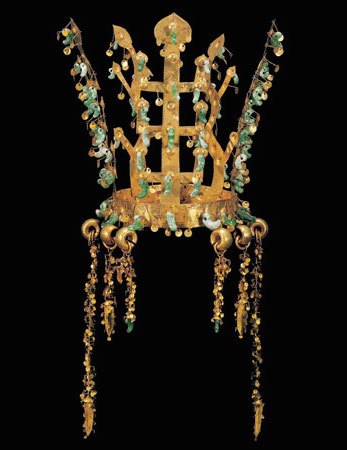
Crown, Silla kingdom, second half of 5th century, gold and jade, excavated from the north mound of Hwangnam Daechong Tomb, 10 3/4 in. / 27.3 cm high (Gyeongju National Museum, Korea, National Treasure 191)
- Description: A crown made of gold and jade, decorated with intricate designs and symbols.
- Historical context and significance: The crown was created during the Silla period in Korea, around the 5th-6th century CE. It was used to crown royalty and symbolized the power and authority of the Korean monarchy. The intricate designs and symbols on the crown reflect the religious and cultural beliefs of the Silla people.
The David Vases
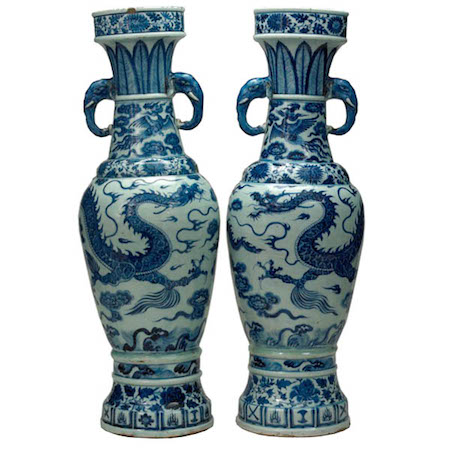
The David Vases, c. 1351, Yuan dynasty, 63.6 x 20.7 cm, Jiangxi province, China © Trustees of the British Museum
- Description: A pair of blue and white porcelain vases with intricate designs, created during the Ming Dynasty in China.
- Historical context and significance: The David Vases are significant for their beauty and the level of craftsmanship involved in their creation. They are also important for their connection to European and Chinese cultural exchange during the 17th century, as they were named after Sir Robert David, a European collector who owned them.
Portrait of Sin Sukju:
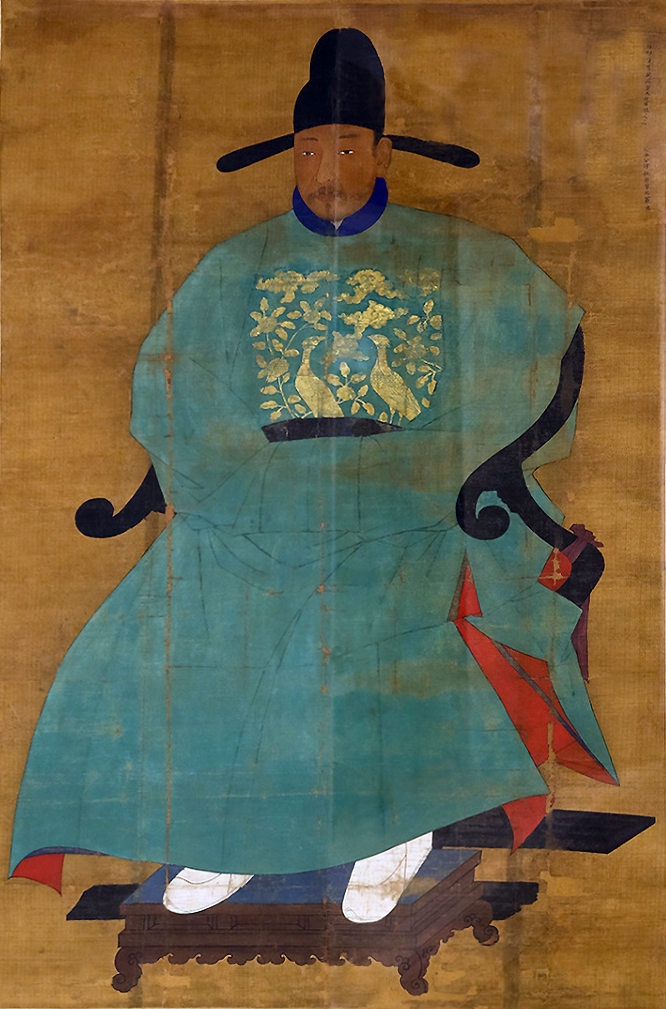
Portrait of Sin Sukju, second half of the 15th century, hanging scroll, ink and color on silk, 167 x 109.5 cm, Goryeong Sin Family Collection, Cheongwon, Treasure no. 613.
White and Red Plum Blossoms:
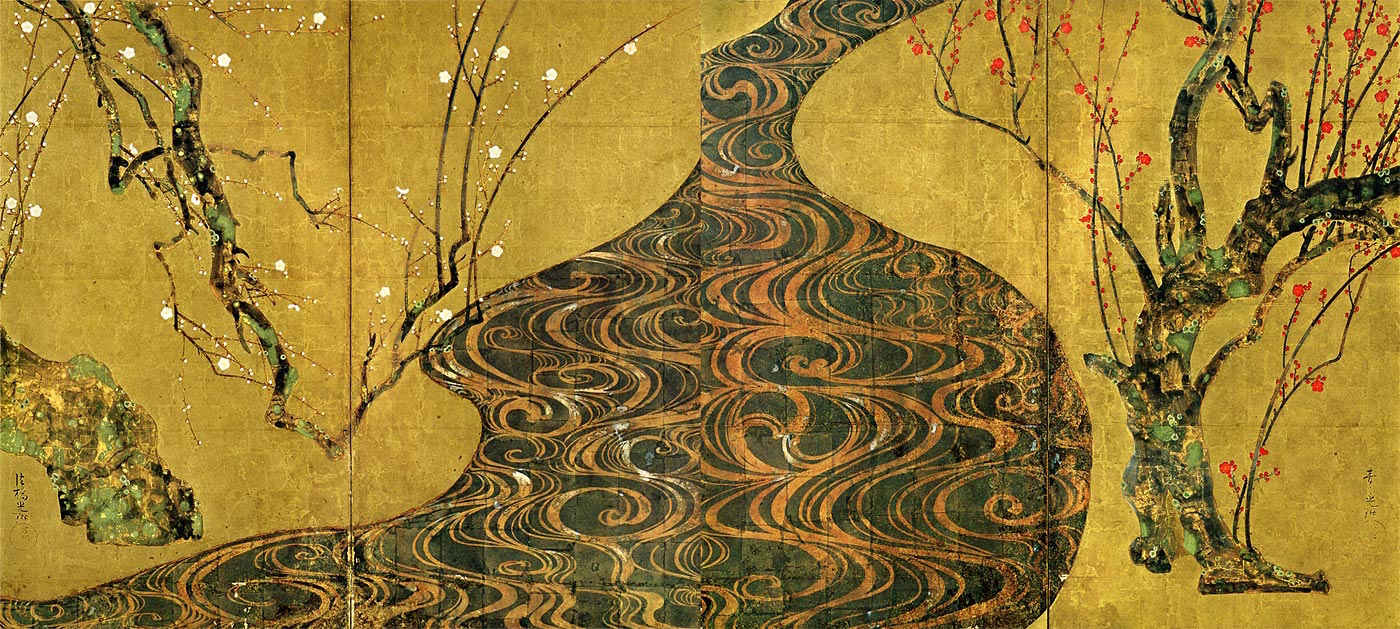
Ogata Kōrin, Red and White Plum Blossoms, Edo period, 18th century, pair of two-fold screens, color and gold leaf on paper, 156 ×172.2 cm each, National Treasure (MOA Museum in Atami, Japan)
- Description: A painting of white and red plum blossoms on a branch, created during the Edo period in Japan.
- Historical context and significance: The painting is significant for its simple yet elegant style, which reflects the aesthetics of the Edo period. It is also important for its role in Japanese art history, as it is considered one of the finest examples of plum blossom painting.
Under the Wave off Kanagawa:

Katsushika Hokusai, Under the Wave off Kanagawa (Kanagawa oki nami ura), also known as The Great Wave, from the series Thirty-six Views of Mount Fuji (Fugaku sanjūrokkei), c. 1830-32, polychrome woodblock print; ink and color on paper, 10 1/8 x 14 15 /16 inches; 25.7 x 37.9 cm (The Metropolitan Museum of Art, New York)
- Description: A woodblock print by Japanese artist Hokusai, depicting a giant wave about to crash down on boats off the coast of Japan.
- Historical context and significance: The print is significant for its iconic imagery and its influence on Japanese and Western art. It is considered one of the most famous examples of Japanese art, and it reflects the cultural and artistic achievements of the Edo period. It is also significant for its influence on Western artists, who were fascinated by Japanese art and its unique style.
Great Stupa at Sanchi

One of the most famous stupas, The Great Stupa (Mahastupa) was built at the birthplace of Ashoka’s wife, Devi, daughter of a local merchant in the village of Sanchi located on an important trade route in the state of Madya Pradesh, India (photo: Nagarjun Kandukuru, CC: BY 2.0)
- Description: A large hemispherical Buddhist stupa located in Sanchi, Madhya Pradesh, India. It is one of the oldest and most important Buddhist monuments in India, and contains relics of the Buddha.
- Context: The Great Stupa at Sanchi was built in the 3rd century BCE and was expanded over the centuries. It is an important symbol of Buddhist architecture and art, and is an example of the development of Buddhist art in India.
Terracotta warriors:
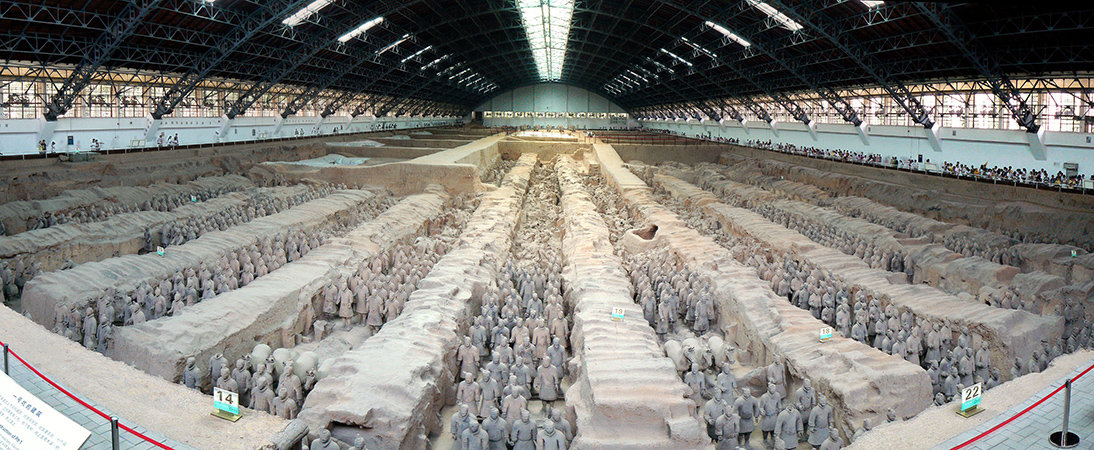
Terracotta warriors from the mausoleum of the first Qin emperor of China Qin Shihuang, c. 221-206 B.C.E., Qin Dynasty, painted terracotta, Terracotta Warriors and Horses Museum, Shaanxi, China (photo: Will Clayton, CC BY 2.0)
- Description: A collection of terracotta sculptures depicting the armies of the first Emperor of China, Qin Shi Huang. The sculptures include soldiers, horses, chariots, and other objects.
- Context: The terracotta warriors were created in the 3rd century BCE and were buried with the emperor to protect him in the afterlife. The sculptures are an important example of ancient Chinese art and culture, and represent the power and authority of the Qin dynasty.
Funeral banner of Lady Dai (Xin Zhui):
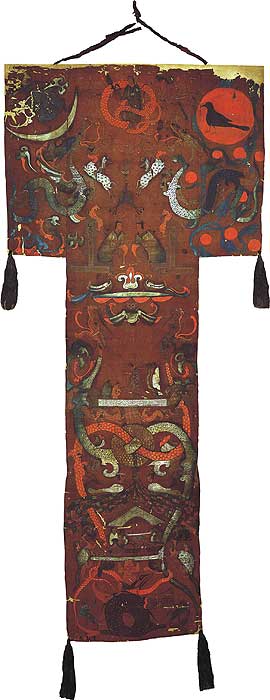
Funeral banner of Lady Dai (Xin Zhui), 2nd century B.C.E., silk, 205 x 92 and 47.7 cm (Hunan Provincial Museum)
- Description: A large silk banner found in the tomb of Lady Dai, the wife of the Marquis of Dai, in Changsha, China. The banner depicts various scenes from the afterlife and the journey of Lady Dai's soul.
- Context: The banner dates from the Han dynasty (2nd century BCE) and is one of the most important examples of Han dynasty art and culture. It provides important information about the beliefs and customs of the Han dynasty and their view of the afterlife.
Todai-ji:
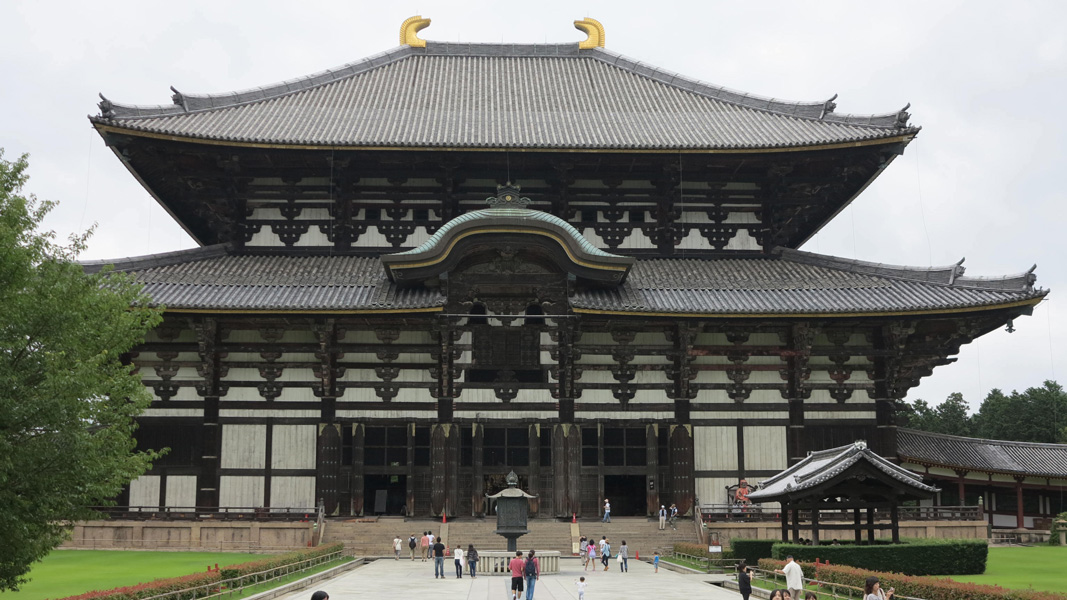
Daibutsuden (Great Buddha Hall), Todaiji, Nara, Japan, 743, rebuilt. c. 1700 (photo: author, CC BY-NC-SA 2.0)
- Description: A Buddhist temple complex located in Nara, Japan. The complex includes a large wooden temple (Daibutsuden) that houses a statue of Buddha, as well as several other buildings and structures.
- Context: Todai-ji was built in the 8th century and is one of the largest wooden buildings in the world. The complex is an important example of Japanese Buddhist architecture and art, and is a UNESCO World Heritage Site.
Lakshmana Temple:
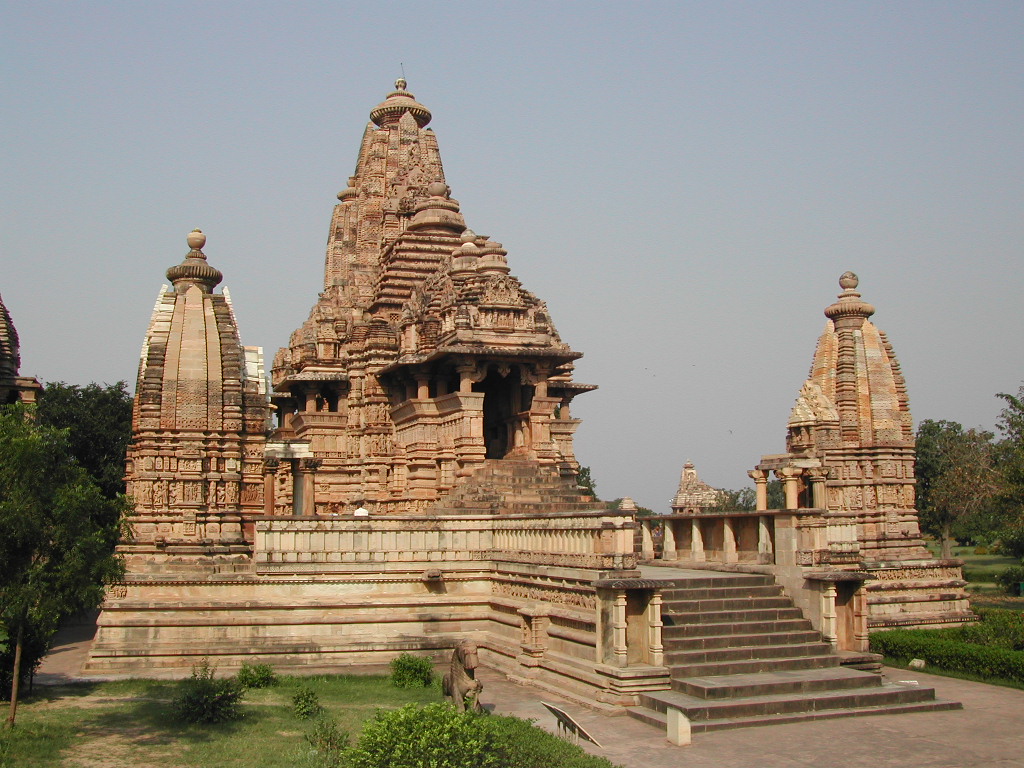
Lakshmana temple, Khajuraho, Chhatarpur District, Madhya Pradesh, India, dedicated 954 C.E. (Chandella period), sandstone (photo: Christopher Voitus, CC BY-SA 3.0)
- Description: A Hindu temple located in Khajuraho, India. The temple is dedicated to the Hindu god Vishnu and is known for its intricate carvings and sculptures depicting various scenes from Hindu mythology.
- Context: The Lakshmana Temple was built in the 10th century and is an important example of Indian temple architecture and art. It is one of the most well-preserved temples in Khajuraho, which is known for its group of Hindu and Jain temples.
Travelers among Mountains and Streams:
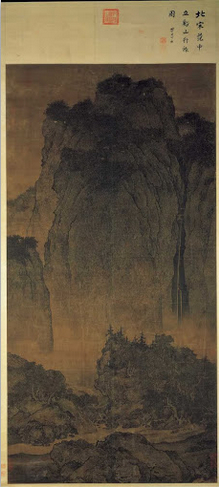
Fan Kuan, Travelers by Streams and Mountains, ink on silk hanging scroll, c. 1000, 206.3 x 103.3 cm. (National Palace Museum, Taibei)
- Description: A landscape painting by Chinese artist Fan Kuan. The painting depicts a mountainous landscape with travelers and various animals in the foreground.
- Context: The painting was created in the 11th century during the Song dynasty and is an important example of Chinese landscape painting. It is known for its use of light and shadow to create a sense of depth and distance.
Shiva as Lord of Dance (Nataraja):
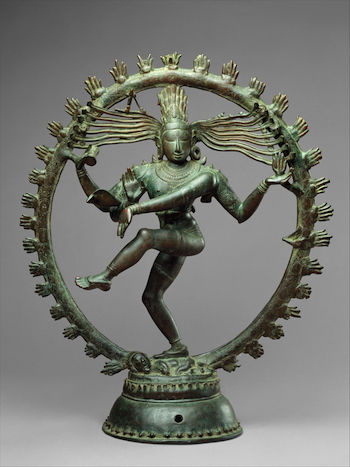
Shiva as Lord of the Dance (Nataraja), c. 11th century, Copper alloy, Chola period, 68.3 x 56.5 cm (The Metropolitan Museum of Art)
- Description: A bronze sculpture depicting the Hindu god Shiva in his form as Nataraja, the Lord of Dance. The sculpture is known for its dynamic movement and intricate details.
- Context: The sculpture dates from the Chola dynasty (10th-12th centuries) and is an important example of Indian sculpture and iconography. It represents the Hindu belief in the cycle of creation and destruction, and the power of the god Shiva.
Night Attack on the Sanjô Palace:
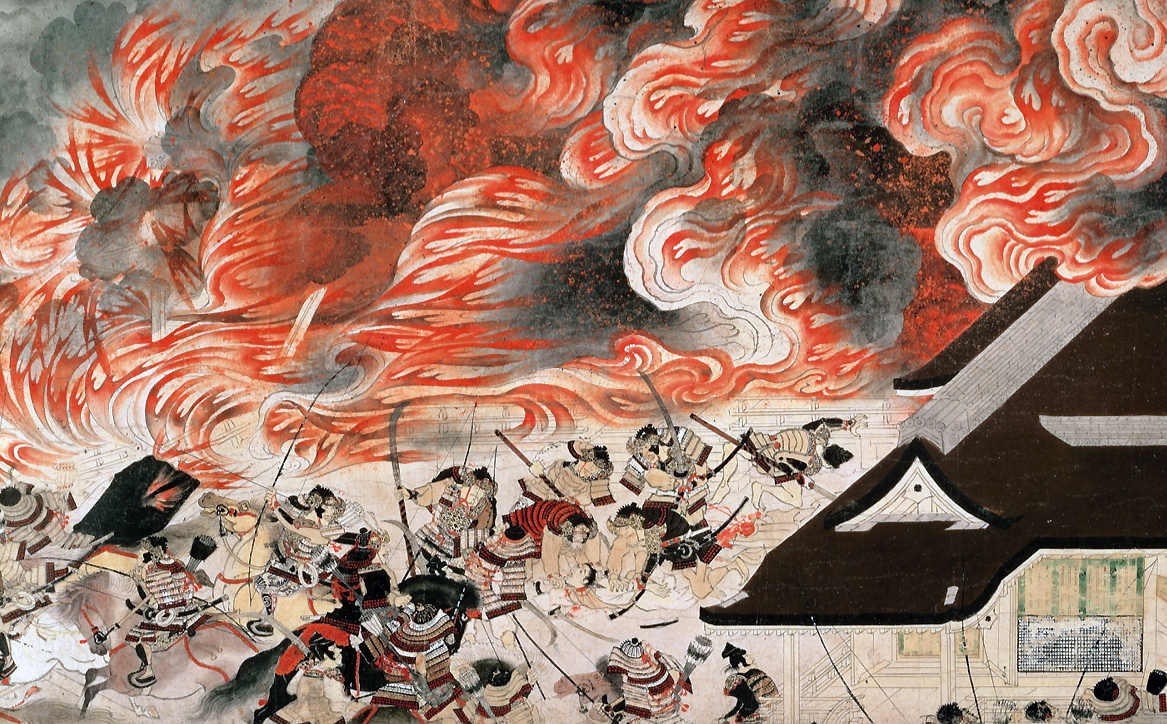

Night Attack on the Sanjô Palace (detail), Illustrated Scrolls of the Events of the Heiji Era (Heiji monogatari emaki) Japanese, Kamakura period, second half of the 13th century, 45.9 x 774.5 x 7.6 cm (Museum of Fine Arts, Boston)
- Description: A handscroll painting by Japanese artist Kamakura period (13th-14th centuries). The painting depicts a scene from the Genpei War
- Context: The Night Attack on the Sanjô Palace is a historical event that took place in 1185 in Japan, during which Minamoto no Yoshitsune and his forces attacked and defeated Taira no Kiyomori and his army. The painting is an important example of Japanese narrative painting and reflects the political and social climate of the Kamakura period.
Forbidden City:
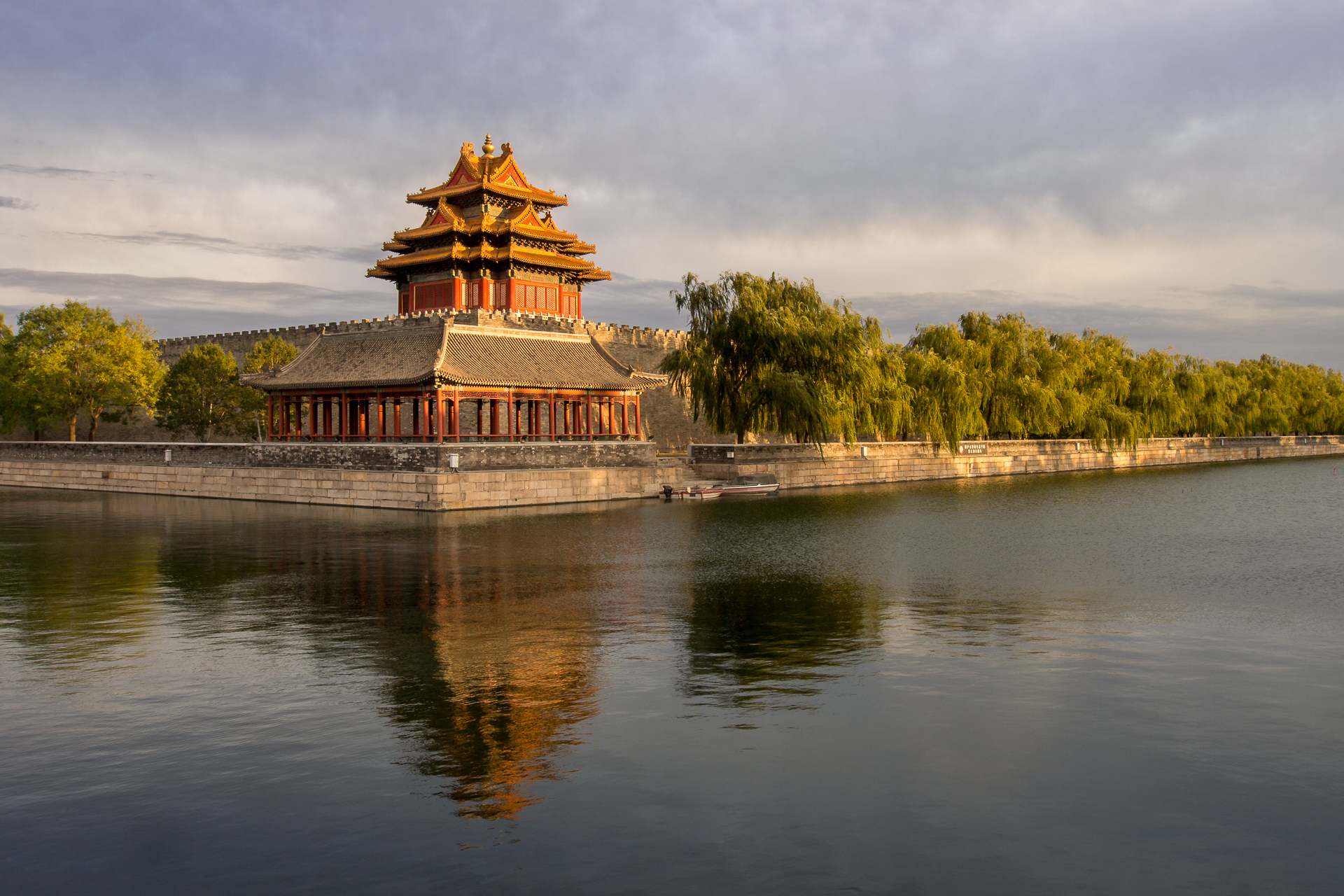
Northwest corner tower of the Forbidden City and moat, Beijing, China (photo: A_peach, CC BY 2.0)
- Description: A large palace complex located in Beijing, China. It was the imperial palace of the Ming and Qing dynasties and is known for its impressive architecture and artwork.
- Context: The Forbidden City was built in the 15th century and was the political and cultural center of China for nearly 500 years. It is an important example of Chinese palace architecture and art, and reflects the power and authority of the imperial rulers.
Chairman Mao en Route to Anyuan:
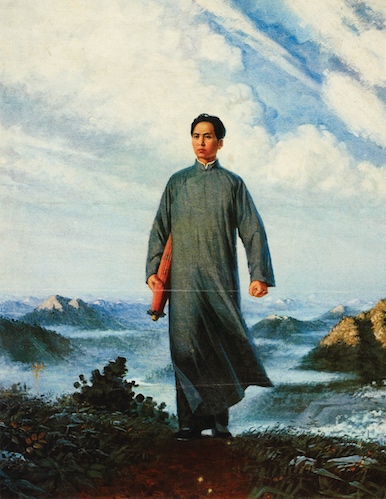
Liu Chunhua, Chairman Mao en Route to Anyuan, 1967, oil on canvas
- Description: A propaganda poster depicting Mao Zedong, the founder of the People's Republic of China, during his visit to Anyuan in 1921. The poster is known for its bold colors and graphic design.
- Context: The poster was created in the 1960s during the Cultural Revolution and was used to promote Mao's ideology and his role in the Communist revolution. It is an important example of Chinese propaganda art and reflects the political and social climate of the time.
Longmen Caves:

Central Vairocana Buddha surrounded on either side by a monk, bodhisattva, heavenly king, a Vajrapani (thunderbolt holder), 673–75 C.E., Tang dynasty, limestone, Luoyang, Henan province, (photo: Kevin Poh, CC BY 2.0)
- Description: A series of caves and rock-cut sculptures located in Luoyang, China. The caves date from the Northern Wei dynasty to the Tang dynasty and contain thousands of Buddhist statues and inscriptions.
- Context: The Longmen Caves are an important example of Chinese Buddhist art and culture, and reflect the influence of Buddhism on Chinese society during the Wei and Tang dynasties. The sculptures are known for their intricate details and delicate carving.
Borobudur Temple:
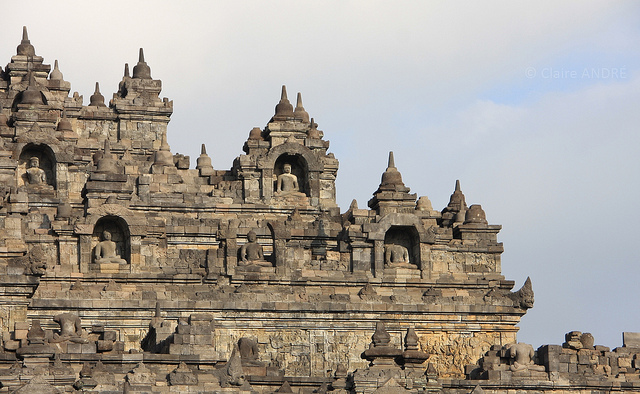
Borobudur, Indonesia (photo: Claire André, CC BY-NC-ND 2.0)
- Description: A Buddhist temple located in Java, Indonesia. The temple is known for its large, bell-shaped structure and its intricate carvings depicting various scenes from Buddhist mythology.
- Context: The Borobudur Temple was built in the 9th century and is one of the largest Buddhist temples in the world. It is an important example of Indonesian Buddhist art and architecture, and reflects the influence of Indian culture on Indonesian society.
Angkor Wat
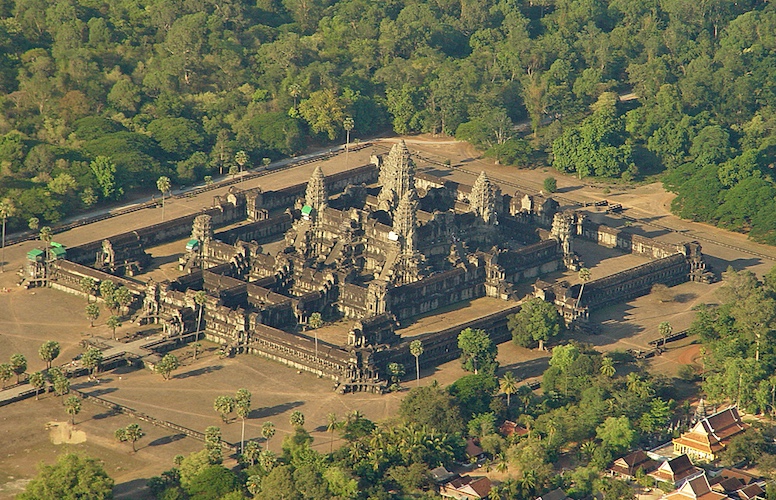
Aerial view, Angkor Wat, Siem Reap, Cambodia, 1116-1150 (photo: Peter Garnhum, CC BY-NC 2.0)
- Description: A large complex of temples and buildings located in Siem Reap, Cambodia. The complex includes the famous temple of Angkor Wat, as well as many other structures.
- Context: Angkor was the capital city of the Khmer Empire from the 9th to the 15th centuries, and is an important example of Khmer architecture and art. The temples are known for their intricate carvings and sculptures depicting various scenes from Hindu and Buddhist mythology.
Jahangir Preferring a Sufi Shaikh to Kings:
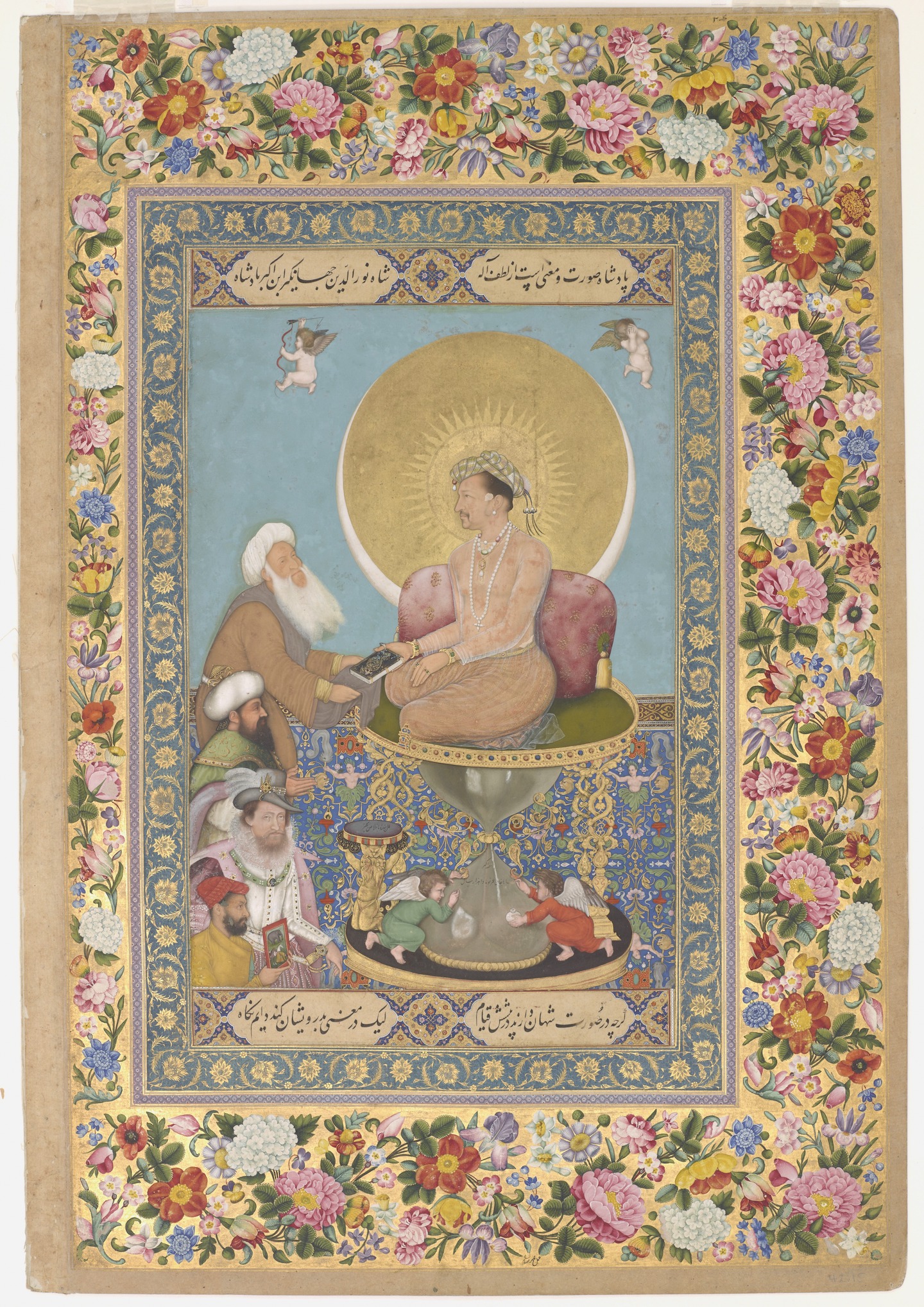
Bichitr, margins by Muhammad Sadiq, Jahangir Preferring a Sufi Shaikh to Kings from the "St. Petersburg Album," 1615–18, opaque watercolor, gold and ink on paper, 46.9 x 30.7 cm (National Museum of Asian Art, Smithsonian, Washington, D.C.)
- Description: A painting by Indian artist Bichitr depicting the Mughal emperor Jahangir in a garden, surrounded by various figures. The painting is known for its intricate details and symbolism.
- Context: The painting was created in the early 17th century and is an important example of Mughal art and culture. It reflects the religious and cultural diversity of the Mughal Empire, as well as the power and authority of the emperor.
Taj Mahal:
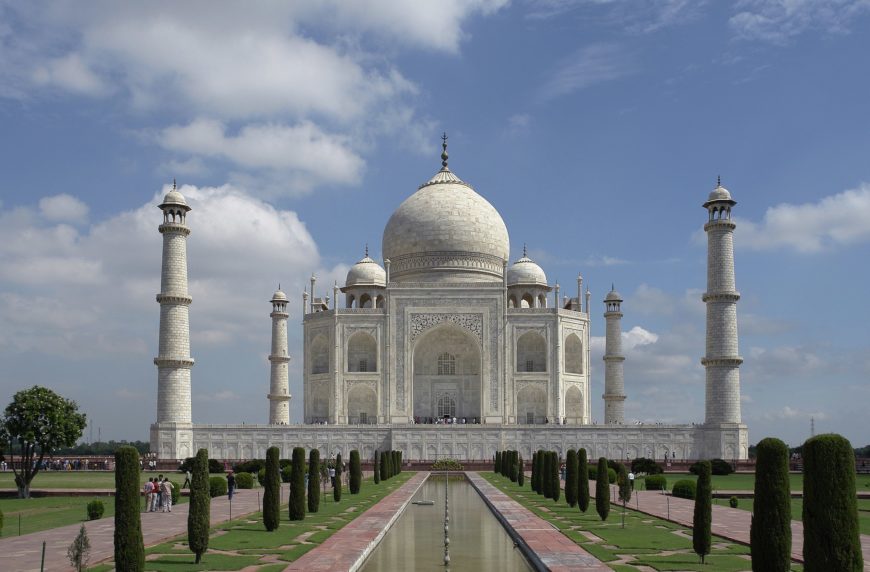
Taj Mahal, Agra, India, 1632–53 (photo: King of Hearts, CC BY-SA 4.0)
- Description: A mausoleum located in Agra, India, built by the Mughal emperor Shah Jahan in memory of his wife Mumtaz Mahal. The Taj Mahal is known for its impressive architecture and decoration, including its intricate marble inlay work.
- Context: The Taj Mahal was built in the 17th century and is an important example of Mughal architecture and art. It reflects the Mughal Empire's cultural and artistic achievements, as well as the emperor's love for his wife.
Ryoan-ji:
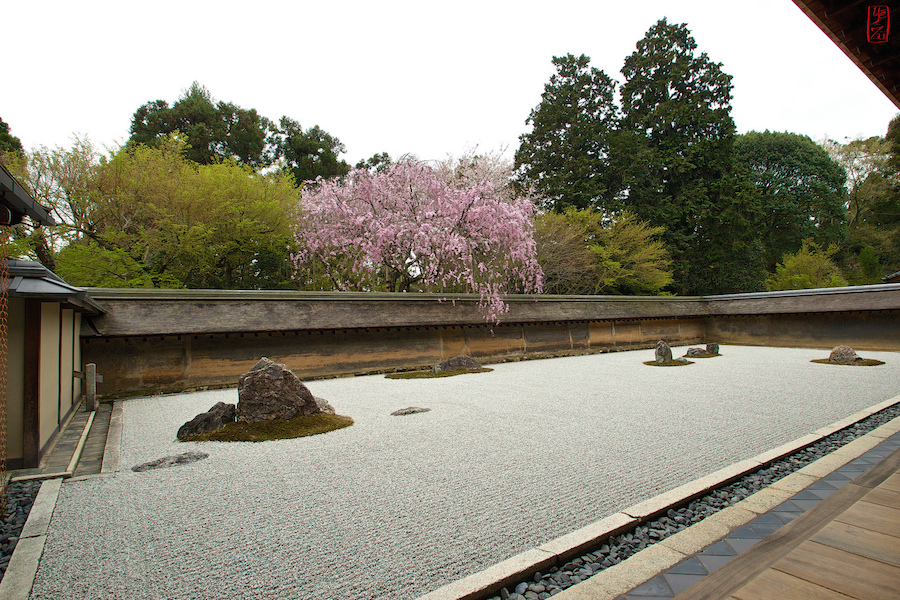
Rock garden, Ryōanji, Kyoto, Japan (photo: Vincent Briccoli, CC BY-NC-ND 2.0)
- Description: A Zen temple located in Kyoto, Japan, known for its famous rock garden. The garden consists of 15 rocks arranged in a pattern on a bed of white gravel.
- Context: Ryoan-ji was built in the late 15th century and is an important example of Japanese Zen Buddhism and its influence on Japanese art and culture. The rock garden is known for its simplicity and its ability to evoke a sense of peace and calm.

- Unit 8 Required Works
- Gold and Jade Crown
- The David Vases
- Portrait of Sin Sukju:
- White and Red Plum Blossoms:
- Under the Wave off Kanagawa:
- Great Stupa at Sanchi
- Terracotta warriors:
- Funeral banner of Lady Dai (Xin Zhui):
- Todai-ji:
- Lakshmana Temple:
- Travelers among Mountains and Streams:
- Shiva as Lord of Dance (Nataraja):
- Night Attack on the Sanjô Palace:
- Forbidden City:
- Chairman Mao en Route to Anyuan:
- Longmen Caves:
- Borobudur Temple:
- Angkor Wat
- Jahangir Preferring a Sufi Shaikh to Kings:
- Taj Mahal:
- Ryoan-ji:

Fiveable
Resources
© 2025 Fiveable Inc. All rights reserved.